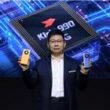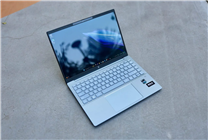The Intensifying Global Memory Chip Shortage: Impacts and Insights
Summary
- Major electronics manufacturers, including Dell and HP, have warned of an escalating memory chip shortage due to surging demand for artificial intelligence infrastructure.
- Estimates predict memory prices may increase by roughly 50% by mid-2026, impacting various sectors from consumer electronics to the automotive industry.
- Companies are exploring various strategies to mitigate costs and ensure supply, with divergent approaches observed across the industry.
The global electronics landscape is facing a significant challenge: a critical shortage of memory chips. Major manufacturers like Dell and HP have recently issued stern warnings regarding supply chain constraints that they anticipate will worsen in the future—primarily driven by the rapid growth in demand for artificial intelligence (AI) technologies.
Unprecedented Demand and Supply Constraints
As demand surges for AI infrastructure, the pressure on memory suppliers is intensifying, causing downstream manufacturers to react proactively. Not long ago, Xiaomi raised concerns about potential price hikes, while Lenovo has begun stockpiling memory chips to mitigate rising costs. Recent predictions from industry analysts suggest that memory prices could rise by approximately 50% from current levels by the second quarter of 2026, driven in large part by a shortage of essential chips.
Memory chips serve as the backbone of virtually every modern electronic device, from smartphones to medical equipment and automobiles. The mounting demand for AI-related applications has further complicated an already strained supply chain. Memory chips can be categorized into two primary types: processing-assisted and information storage. Consequently, manufacturers are reallocating production capacity to prioritize high-bandwidth memory (HBM) products, intensifying shortages for standard memory chips.
Manufacturer Responses and Industry Reactions
Dell Chief Operating Officer Jeff Clarke candidly stated that the speed at which costs are rising is unprecedented. He noted the tightening supply of DRAM, as well as shortages in hard drives and NAND flash memory. As a result, Dell is reevaluating its product offerings and configurations, preparing for potential price adjustments that could impact consumers.
Similarly, HP CEO Enrique Lores foresees significant hurdles in the latter half of 2026, with the company adopting a cautious performance strategy. He mentioned plans to diversify memory suppliers and reduce memory configurations in products, given that memory costs currently account for 15% to 18% of the total production cost of regular PCs.
Escalating Prices and Market Dynamics
The ongoing competition within the AI sector is not solely limited to hardware capacity; it has also driven an upsurge in operational costs, such as energy expenses surrounding data centers. The stock market reflects this boom, with shares of leading memory manufacturers like Samsung Electronics, SK Hynix, and Micron Technology seeing considerable growth due to diminishing inventory and emerging supply challenges. In fact, SK Hynix indicated that it has completely sold out its memory chip offerings for the following year, while Micron has cautioned that supply constraints may persist until 2026.
Experts note that this trend is not limited to just advanced memory sectors; traditional memory markets are also experiencing robust demand that outpaces supply. As reported by analysts at CLSA Korea Securities, the price uptrend in DRAM and NAND memory is likely to endure for several quarters.
This surge in demand for memory chips may also impact the production of essential components, such as logic chips crucial for AI systems. Production slowdowns could occur if clients are unable to secure adequate memory supply, potentially resulting in a ripple effect across various sectors, including automobiles and consumer electronics.
Mitigation Strategies Amid Rising Costs
In light of these challenges, many PC and mobile manufacturers are exploring countermeasures to combat rising memory costs. Xiaomi’s recent second-quarter earnings report revealed a drop in its mobile phone gross profit margin due to increased component prices, including memory. Despite the pressures to raise prices, the company is focused on optimizing product structures and advancing toward higher-end offerings.
Lenovo has emphasized its ability to capitalize on economies of scale, aiming to capture market share amid competitors facing difficulties. Meanwhile, Asus is accelerating its stockpiling efforts while maintaining price stability through the holiday season.
Amid these turbulent times, Apple appears to be one of the more optimistic players. Though CFO Kevan Parekh acknowledged "slight upward pressure" on memory prices, he also stated that Apple is effectively managing costs and remains in a strong position due to its status as a primary customer in the electronics supply chain.
Conclusion: Navigating Market Challenges
While the memory chip market grapples with a significant supply shortage, analysts believe it is entering a "super cycle" characterized by aggressive price increases and innovative responses by manufacturers. The ongoing pressures could spur advancements in domestic manufacturing and technological innovations, particularly within the context of China’s ambitions for self-sufficiency in critical industries.
As the landscape continues to evolve, stakeholders across the supply chain must remain agile and responsive to disruptions, ensuring they can navigate the complexities ahead efficiently. The memory chip shortage presents both challenges and opportunities for manufacturers looking to adapt in this fast-paced environment.





